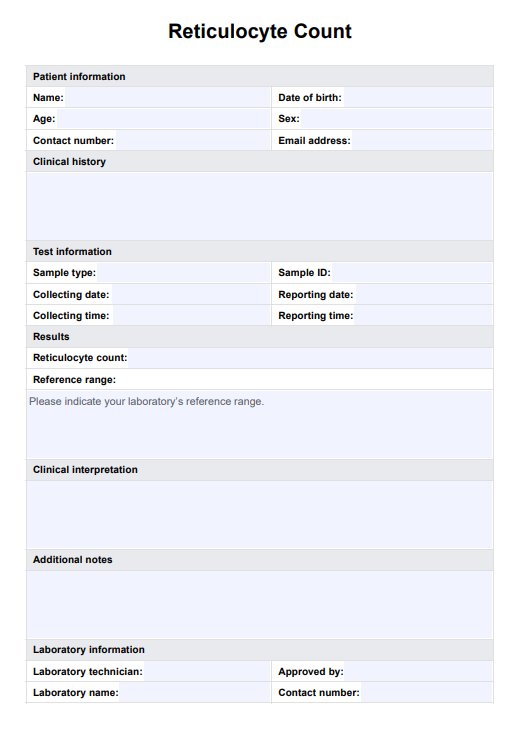A reticulocyte count is a blood test that measures the number of reticulocytes (immature red blood cells) in the blood. It's used to assess bone marrow function and the body's ability to produce red blood cells.

Reticulocyte Count Template
Comprehensive guide on reticulocyte count, covering essential aspects for accurate analysis and diagnosis in pathology labs, with detailed form templates
Use Template
Reticulocyte Count Template Template
Commonly asked questions
This test is important for diagnosing and determining the cause of anemia, assessing bone marrow function, monitoring response to treatments like chemotherapy, and evaluating the body's response to conditions causing increased red blood cell production.
The test is performed by drawing a blood sample, which is then analyzed in a laboratory to count the number of reticulocytes relative to mature red blood cells.
EHR and practice management software
Get started for free
*No credit card required
Free
$0/usd
Unlimited clients
Telehealth
1GB of storage
Client portal text
Automated billing and online payments











